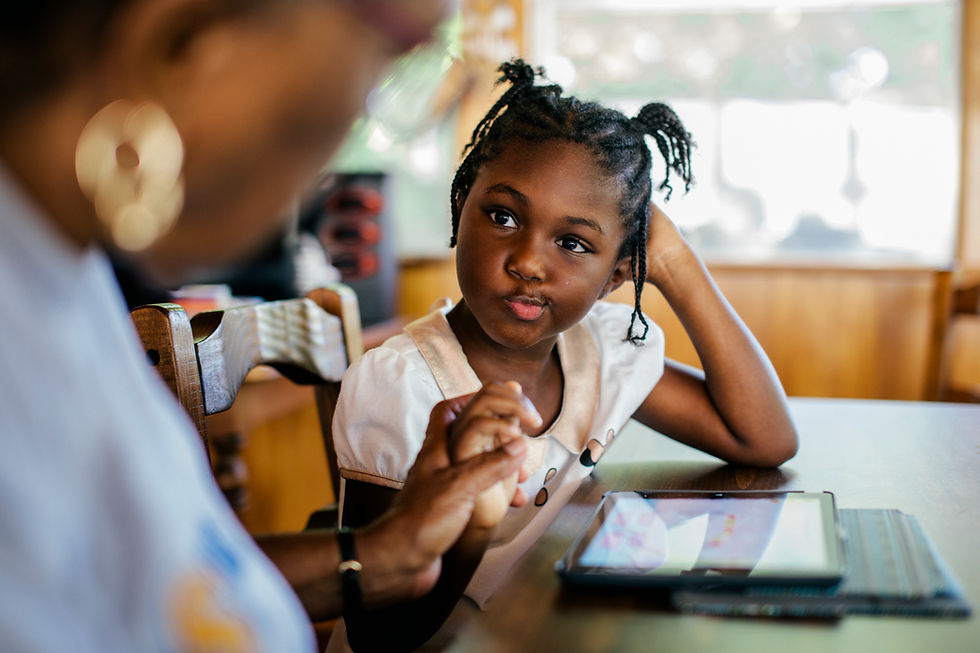Behind the Scenes: Creating the Foundational Phonics Curriculum for Beginning Readers
- Paula Plumer

- Jan 26, 2024
- 3 min read
Writing a curriculum for beginning readers was not even on my radar back in 2018. I was knee-deep in my role as a Title 1 intervention teacher. That year, I also found myself co-teaching in classrooms half the time. As we kicked off the school year, our team dove into assessing the fluency levels of all our students, running evaluations for kindergarteners and first graders, and figuring out who needed extra help. It was during this whirlwind that one of my colleagues pointed out a particularly tough situation in a first-grade class.

You see, there were a couple of kids with behavior issues, but the bigger problem was that many of them were struggling academically. Their teacher, in her second year, was a math whiz but hadn't really tackled teaching reading before. That's where I stepped in. With a spare half-hour in my schedule, I offered to help.
But when I checked out the curriculum she had, all I found was a list of standards and a mountain of worksheets. Not exactly what I was hoping for. It was a bit disheartening, considering that just a few years earlier, I had helped put together a comprehensive ELA curriculum for sixth graders. But apparently, first grade was a different story.
You might find it hard to believe, but back then, it was pretty common for teachers to be expected to create their own curriculum based on the CCSS standards. It seems a bit ridiculous now. Some teachers knocked it out of the park, but not everyone had the time or know-how. And that showed up in test scores.
I had been trained in an Orton Gillingham derived approach, which worked wonders with the older kids, as it was designed to. But I wondered: What if we could use a similar, age-appropriate approach right from the beginning, when kids start learning to read? Could we keep them from falling so far behind? This was my chance to find out.

So, almost every night and on weekends that school year, I whipped up lessons for my first graders. Trial and error became my best friends as I figured out what clicked and what flopped. I never set out to write a whole curriculum, but by winter break, I realized that's exactly what I was doing. And you know what? It made a real difference for my students.
Fast forward to the next school year (2019-2020), and I found myself mainly working with older kids in reading and math. But I didn't forget about my little first graders. I mixed in my new curriculum with the Orton Gillingham method for the few primary students I still worked with. Then, just before Covid threw everything into chaos, I asked my principal if I could go back to a regular classroom job in the fall. With retirement on the horizon, I wanted to finish my career where it all began — in a kindergarten classroom. But Covid had other plans.
In 2020-2021, I became an online first grade teacher. It was also the year my school district rolled out a shiny new ELA curriculum along with a coordinated reading intervention program they couldn't stop raving about. We were required to use it "with fidelity.”

But here's the kicker: Some parts of the new reading program were great, but the small group lessons meant to teach kids to read? Not so much. I had a group of students who were getting extra help and still struggling to read anything. At the end of November, I took matters into my own hands. I started adding a second quick reading lesson during our afternoon online sessions and assigned the passages I'd written two years earlier. At first, I had my students read a passage every day, then I scaled it back to three times a week after winter break. I had them record themselves reading and do the comprehension activities, which I checked every night.
And you know what? It worked! By winter break, even my newest English language learner was reading his first words. By the end of the year, he was only a few months behind grade level, while the rest of the class was right on track or even ahead. As I wrapped up the year, I decided that maybe I should find a way to share the approach I'd developed.
What followed was a two-year marathon of writing, revising, and designing, way more than I bargained for. But it's been worth it knowing that I'm helping educators around the world teach their students to read. Today I call my reading curriculum Foundational Phonics. Foundational Phonics is proof that sometimes, the best solutions come from rolling up your sleeves and diving in, no matter what challenges you face.
If you are interested in purchasing the Foundational Phonics curriculum in its entirety, it is available exclusively on TPT. Just click the product cover below to find it in my TPT store.





コメント